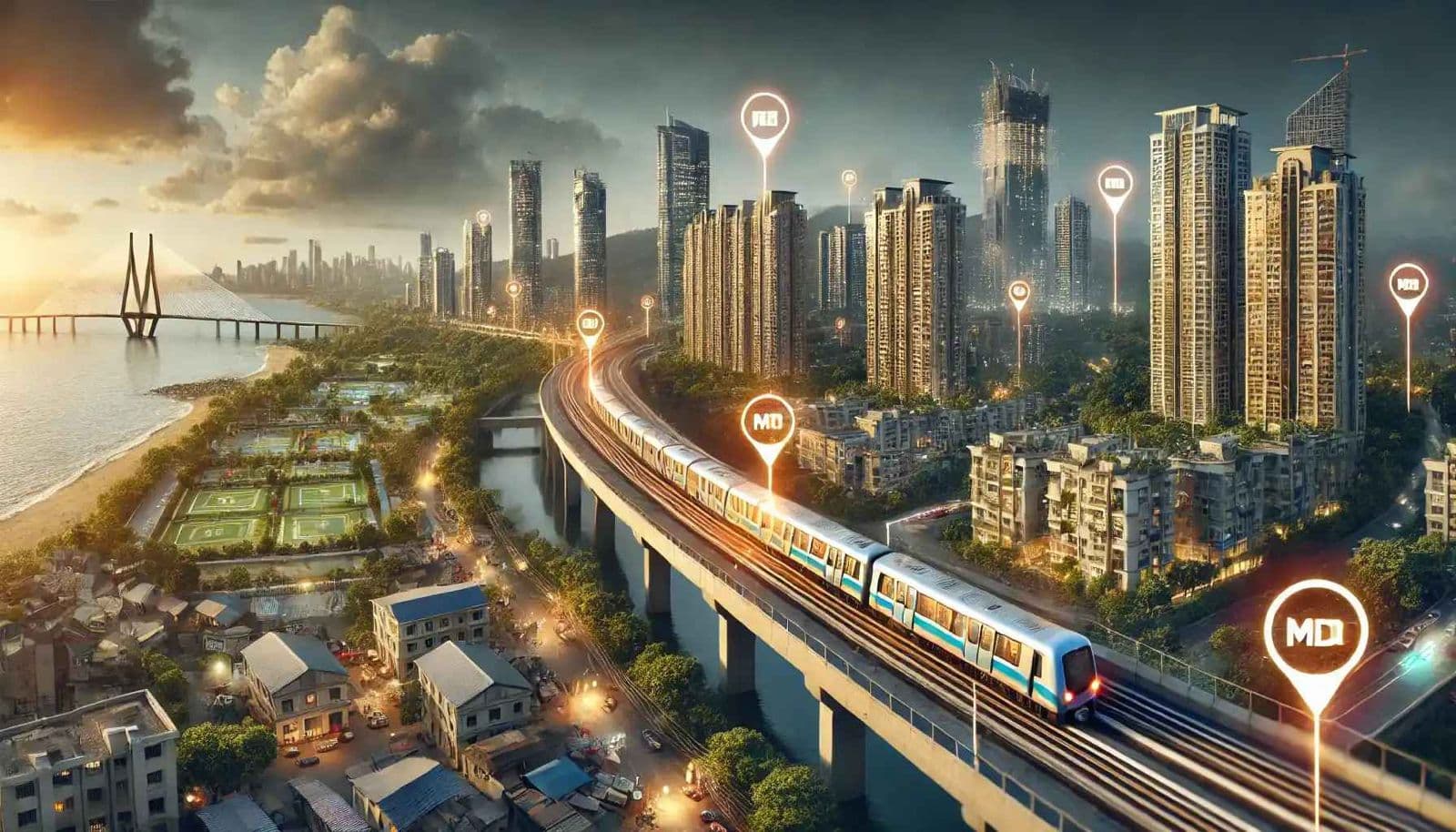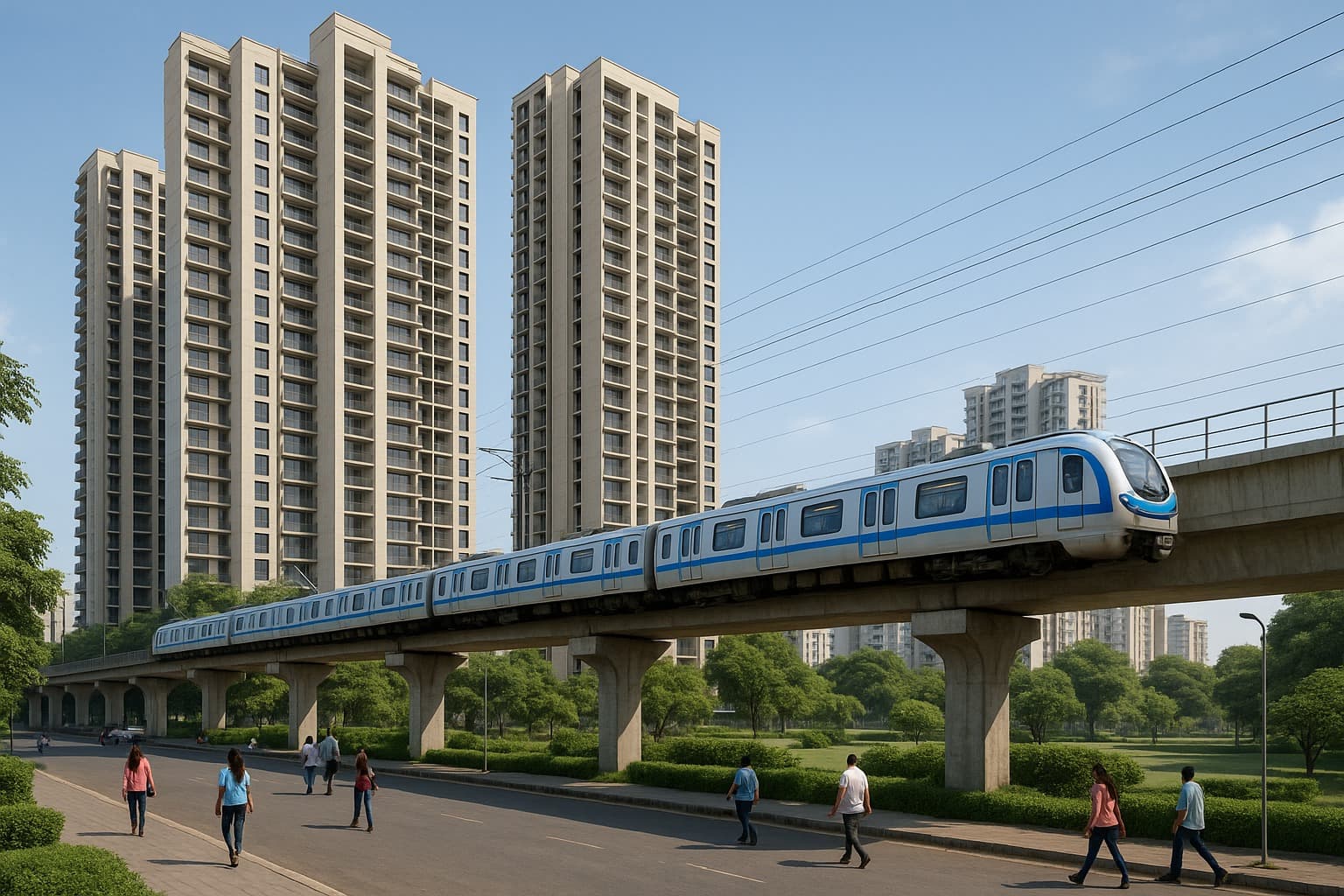Impact of Metro Expansion on Property Rates in Mumbai
Summary
Mumbai's metro expansion significantly impacts property rates by enhancing connectivity and reducing commute times. Areas near metro lines experience property appreciation, transforming suburbs and attracting investors.

Mumbai, India’s financial capital, is a city that never sleeps. From the bustling streets of South Mumbai to the crowded suburbs of Thane and Navi Mumbai, the city’s pulse is defined by its people, businesses, and increasingly, its infrastructure. Over the past decade, metro expansion has emerged as one of the most significant factors shaping real estate dynamics in Mumbai. As the city grapples with congestion and commuting challenges, the metro promises speed, connectivity, and convenience—turning entire neighborhoods into high-demand property zones almost overnight.
Metro Expansion: A Game Changer for Connectivity
The Mumbai Metro project has been a long-awaited lifeline for millions of daily commuters. Lines 2, 3, and 4, in particular, have created ripples across the housing market. Line 2, connecting Dahisar to Mandale, has opened up the western suburbs, while Line 3, running from Colaba to SEEPZ, is projected to significantly ease travel across central business hubs. Meanwhile, Line 4, stretching from Wadala to Kasarvadavali, is enhancing accessibility in the eastern suburbs.
This enhanced connectivity is not just a matter of convenience—it fundamentally changes the way people choose where to live. Areas once considered too far from business hubs are now within easy reach, making them attractive to professionals, families, and investors alike.
Property Appreciation Near Metro Corridors
Historically, improved infrastructure directly correlates with rising property prices, and Mumbai is no exception. Real estate experts note that properties within a 1–2 km radius of upcoming metro stations have experienced price appreciation of 10–25% even before completion. Neighborhoods like Ghatkopar, Kurla, and Dahisar have already seen heightened buyer interest, while areas along Line 3—such as Lower Parel and Sewri—are witnessing a surge in premium apartment launches.
The reasoning is simple: people are willing to pay a premium for reduced commuting time. In a city where daily travel can often exceed two hours each way, metro connectivity transforms lifestyle quality, boosting both residential and commercial property demand.
Suburbs Transforming into Urban Hubs
Metro expansion is not only affecting property rates; it is reshaping urban geography. Suburbs that were once considered peripheral are now emerging as mini urban hubs. Take, for instance, the eastern corridor along Line 4. Suburbs like Mulund, Bhandup, and Thane are seeing a proliferation of mixed-use developments, combining residential, commercial, and retail spaces. This trend is encouraging a “live-work-play” model, reducing dependency on long commutes and increasing the attractiveness of suburban living.

Investors are keenly watching these emerging pockets. Rental yields have also improved, as professionals are increasingly seeking apartments close to metro stations to avoid traffic congestion. For landlords, proximity to metro stations guarantees faster occupancy and higher rental returns—a win-win situation.
Commercial Real Estate Benefits
While residential property benefits are often discussed, commercial real estate is equally impacted. Offices near metro stations enjoy higher demand, as companies prioritize locations with easy employee access. Corporate tenants are willing to pay premium rents for office spaces near key metro hubs, knowing that metro lines reduce absenteeism and enhance workforce efficiency.
This has prompted developers to plan integrated townships and mixed-use projects near metro corridors. By combining office spaces with residential units and retail areas, developers can capitalize on the surge in footfall while providing holistic living solutions.
Future Outlook: Metro as a Catalyst
The momentum is expected to continue well beyond 2025. Upcoming metro phases, including Line 5 (Thane–Kalyan) and Line 6 (Swami Samarth Nagar–Vikhroli), are likely to trigger similar trends in property appreciation. Areas along these lines are projected to witness substantial real estate interest even before operations commence, as buyers and investors anticipate future growth.
Importantly, the metro is also democratizing real estate investment. Previously overlooked neighborhoods now offer attractive entry points for investors looking to benefit from long-term appreciation. Middle-income buyers, first-time homeowners, and even NRIs are increasingly exploring areas that were once considered too remote.
Challenges and Considerations
Despite the positive impact, buyers and investors must approach metro-linked property investments with caution. Construction delays, regulatory approvals, and changes in project timelines can temporarily stall property appreciation. Additionally, the hype around metro corridors sometimes inflates prices prematurely, creating short-term volatility.
Urban planners also caution against unchecked densification. While metro connectivity encourages higher occupancy, it can strain local amenities, including schools, hospitals, and parking spaces. Sustainable urban development alongside infrastructure expansion is crucial to ensure that these neighborhoods remain livable in the long run.
Case Studies: Metro-Driven Growth
Several examples underscore the metro’s impact on Mumbai real estate:

Ghatkopar and Vikhroli: With the operational Line 1 and the upcoming Line 4, residential prices have increased by nearly 20% in the last three years. Rental demand has also surged due to shorter commuting times to key business districts.
Lower Parel: Line 3 has spurred a boom in luxury apartments and commercial spaces, transforming the area into a sought-after corporate and residential hub.
Dahisar: Line 2 connectivity has increased interest in affordable housing projects, attracting first-time buyers seeking budget-friendly yet well-connected options.
These examples illustrate that metro expansion is a decisive factor influencing Mumbai’s property dynamics, benefiting both end-users and investors alike.
Conclusion
The Mumbai metro expansion is much more than just a transportation project—it is a transformative force for the city’s real estate market. By enhancing connectivity, reducing commute times, and making previously inaccessible areas attractive, metro lines are shaping property prices, rental demand, and urban living patterns. Residential and commercial properties alike benefit from this infrastructural push, and investors are positioning themselves to capitalize on the opportunities presented by upcoming metro phases.
However, informed decision-making is crucial. Buyers and investors must consider project timelines, local amenities, and long-term sustainability alongside proximity to metro stations. With careful planning, metro expansion not only offers immediate convenience but also long-term value creation. As Mumbai continues to grow vertically and horizontally, the metro stands as a catalyst driving both real estate growth and urban transformation.
Summary (100 words)
Mumbai’s metro expansion is revolutionizing the city’s real estate market. Lines 2, 3, and 4 have increased property demand and appreciation across suburban and central areas, transforming neighborhoods into high-value zones. Residential, commercial, and mixed-use developments are thriving near metro corridors due to improved connectivity and reduced commute times. Investors, first-time buyers, and corporate tenants are capitalizing on enhanced accessibility, driving rental yields and property sales. While challenges like construction delays and urban densification exist, the metro’s impact on Mumbai’s property rates is undeniable. Strategic investment near metro stations offers both lifestyle convenience and long-term value in India’s financial capital.
